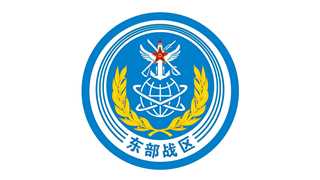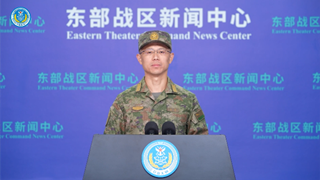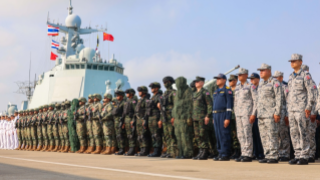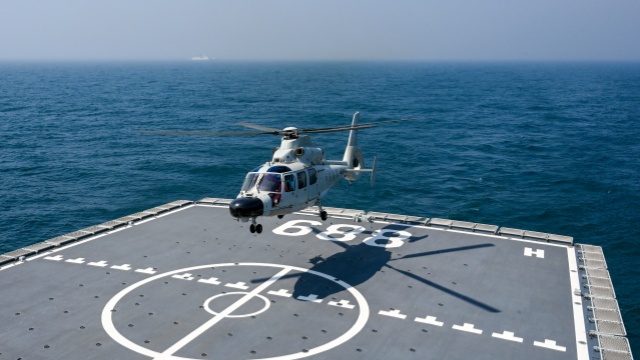BEIJING, April 23 (Xinhua) -- The Chinese People's Liberation Army (PLA) Navy marked its 76th anniversary on Wednesday, reaffirming its commitment to becoming a world-class naval force dedicated to safeguarding both national security and global peace.
As part of the celebrations, the Chinese Navy opened more than 30 active-duty vessels to the public this year -- surpassing previous years in both scale and variety -- drawing large crowds eager to get a closer look.
Among them are the 075-class amphibious assault ship, the 071-class amphibious transport dock, and the 054A and 056A-class guided-missile frigates, many of which have taken part in key missions, including escort operations in the Gulf of Aden, official overseas visits, and joint military exercises.
The Navy also opened several military ports and bases to the public. At naval airfields in cities like Ningbo, Shanghai and Haikou, visitors had the opportunity to view frontline aircraft up close, including the KJ-500H, J-11B, Z-9D and Y-9.
Building a strong navy has long been a national aspiration for China, which boasts over 18,000 kilometers of coastline and exercises jurisdiction over a vast maritime expanse. Yet, from 1840 to 1949, China suffered more than 470 naval incursions by foreign powers, a history that continues to shape its strong emphasis on maritime security.
Since its founding in 1949, the same year the People's Republic of China was founded, the PLA Navy has steadily grown into a modern strategic service.
In just over a decade, it has built a fleet of three aircraft carriers. The first, the Liaoning, a refitted Soviet-made vessel, was commissioned in 2012, followed by the Shandong, China's first domestically built aircraft carrier, which was delivered in 2019.
The third, the Fujian, was unveiled in 2022 as China's first carrier equipped with a catapult launch system. With a full-load displacement of more than 80,000 tonnes, the Fujian features a straight flight deck with electromagnetic catapults and arrestor gear.
In October 2024, the Liaoning and Shandong conducted their first-ever dual-carrier formation exercise in the South China Sea, highlighting China's growing naval capabilities.
The Chinese Navy has rapidly expanded its arsenal, adding new strategic nuclear submarines, 10,000-tonne destroyers, amphibious assault ships, and integrated supply ships. Carrier-based fighter jets have entered service in batches, while new early-warning aircraft and naval helicopters have also joined the force.
The Navy plays an active role in maritime affairs, working to maintain peace, stability, and order at sea, while continuing to provide public security goods to the international community.
In April 2023, the PLA Navy participated in the evacuation of Chinese nationals from Sudan following an outbreak of armed conflict in the country.
It was the third overseas evacuation of civilians carried out by the Chinese Navy in recent years, following two previous operations in Libya and Yemen in 2011 and 2015, respectively.
During the overseas evacuation of civilians, the Chinese Navy demonstrated its commitment to international humanitarian assistance by helping hundreds of foreigners leave the crisis-torn countries, according to military analysts.
The Chinese Navy has played a vital role in the country's international assistance efforts, including delivering 960 tonnes of fresh water to the Maldives during a 2014 water crisis caused by a fire, and sailing over 5,200 nautical miles to support disaster relief operations following a volcanic eruption in Tonga in 2022.
Since December 2008, Chinese naval vessels have been conducting escort missions in the Gulf of Aden and the waters off Somalia, safeguarding both Chinese and foreign ships and helping to transform what was once known as the world's "most dangerous waters" into a "golden waterway."













